This article was co-authored by Mohiba Tareen, MD. Mohiba Tareen is a board certified Dermatologist and the founder of Tareen Dermatology located in Roseville, Maplewood and Faribault, Minnesota. Dr. Tareen completed medical school at the University of Michigan in Ann Arbor, where she was inducted into the prestigious Alpha Omega Alpha honor society. While a dermatology resident at Columbia University in New York City, she won the Conrad Stritzler award of the New York Dermatologic Society and was published in The New England Journal of Medicine. Dr. Tareen then completed a procedural fellowship which focused on dermatologic surgery, laser, and cosmetic dermatology.
There are 12 references cited in this article, which can be found at the bottom of the page.
wikiHow marks an article as reader-approved once it receives enough positive feedback. This article received 14 testimonials and 91% of readers who voted found it helpful, earning it our reader-approved status.
This article has been viewed 467,398 times.
Dyshidrotic eczema goes by many names, including foot-and-hand eczema, pompholyx, and vesicular palmoplantar eczema.[1] Dyshidrotic eczema is characterized by the appearance of tiny blisters on the palms, fingers, and soles of the feet.[2] The cause of this skin disorder is unknown, but several factors are known to trigger the condition, including exposure to nickel or cobalt, a fungal infection, allergies, and/or excessive stress. The skin affected by the blisters tends to get thicker and scaly with time, leading to itching, inflammation, and redness. You can treat dyshidrotic eczema with home remedies, and follow up with medical intervention for severe cases.
Steps
Treating Dyshidrotic Eczema at Home
-
1Use cold and wet compresses to relieve irritation. Cold compresses can help relieve the itching and/or burning sensation caused by eczema. Cold therapy can also reduce the inflammation of the blisters and help numb the irritated nerve endings with generate pain. Soak a clean, soft cloth in cold water and put it in the fridge for a few hours before wrapping around your inflamed hands or feet.
- Wrap your inflamed skin with the cold compress for at least 15 minutes, two to three times daily or as needed.
- To make the cold compress last a little longer, place crushed ice in a small plastic bag and wrap it with a soft cloth before applying to your skin.
- Avoid soaking your inflamed hands or feet in ice — it may give relief initially, but it can cause shock to your blood vessels and lead to frostbite.
-
2Apply aloe vera. Aloe vera gel is a popular herbal remedy for inflamed and irritated skin. It has a strong ability to not only soothe irritated itchy skin and reduce tenderness caused by dyshidrotic eczema but it also significantly speeds up the healing process.[3] Aloe vera also has antimicrobial properties, which is helpful if your eczema is triggered or exacerbated by fungal or bacterial infections. Applying aloe vera multiple times per day for the first few days after you notice redness and irritation on your hands or feet can make a significant impact on combating eczema.
- Aloe Vera contains polysaccharides (complex sugars) that help to hydrate the skin and keep it moisturized. It can also trigger the production of collagen, which gives skin its elasticity.
- If you have an aloe plant in your garden, break off a leaf and apply the thick inner gel/juice directly to your irritated skin.
- Alternatively, buy a bottle of pure aloe gel from a pharmacy. For best effects, place the gel in the refrigerator and apply it after it becomes cool.
Advertisement -
3Consider applying oatmeal. Oatmeal is another home remedy for soothing irritated skin. It works fairly quickly to reduce inflamed and itchy skin. Oat extract contains compounds that have anti-inflammatory properties, which is helpful to soothe skin inflicted with eczema.[4] Thus, make a batch of oatmeal (not too thick), cool it down for a few hours in the fridge and then apply it directly to your inflamed skin, allowing it to dry. Rinse it off with some running water, but do so gently because oatmeal also acts as a mild exfoliator and you don't want to further irritate your skin.
- As an alternative, buy finely ground oatmeal (sold as colloidal oatmeal in health food stores and pharmacies) and mix it with cool water in a small basin or foot bath and soak your hands or feet for 15-20 minutes on a daily basis.
- As a money-saving idea, make your own finely ground oatmeal by pulverizing a handful of instant or slow-cooking oatmeal in a blender until it has a smooth, fine consistency. You'll find that the finely ground oatmeal mixes with water much better.
-
4Keep your skin moist by applying thick ointments or creams. Heavy ointments such as petroleum jelly (Vaseline), mineral oil or vegetable shortening are commonly recommended for eczema because it holds moisture in the skin and provides a layer of protection from potential irritants.[5] Alternatively, creams such as Eucerin and Lubriderm are thicker than most lotions and may also be similarly helpful, although they will have to be reapplied more often than ointments because they get absorbed quicker. Moisturize your skin throughout the day, particularly after taking a bath or shower, to keep water sealed in and to prevent skin dryness/cracking.[6]
- If the eczema is particularly itchy and irritating, consider applying some hydrocortisone cream. Over-the-counter hydrocortisone cream (less than 1%) is helpful for quickly reducing pain and swelling.
- Take the time to massage the cream or ointment into the crevices between your toes and/or fingers, as those are the areas often affected by dyshidrotic eczema.
-
5Take antihistamines to reduce itchiness. Over-the-counter antihistamines such as diphenhydramine (Benadryl) or loratadine (Claritin, Alavert, others) can help relieve the itching and inflammation response that's characteristic of eczema. More specifically, antihistamines block the action of histamine, which is produced during allergic-type reactions.
- Reducing the amount of circulating histamine tends to minimize the expansion (dilation) of small blood vessels beneath the skin, which reduces redness and itchiness sensation in the skin.
- Antihistamines can cause drowsiness, dizziness, blurred vision and confusion — so don't drive or operate heavy machinery while on histamines.
Avoiding Skin Irritation
-
1Reduce the temperature of your baths and showers to prevent dryness. Hot water baths and showers can help promote dryness and skin irritation because the higher temperature water is more effective at removing the natural oils that protect your skin. As such, cool or lukewarm baths and showers are a better idea for eczema.[7] Spending at least 15 minutes in a cool bath on a regular basis can actually help to hydrate your skin because the skin is quite absorbent. However, hot baths tend to pull water from your skin, especially if you use bath salts.
- An Epsom salt bath is usually not recommended for eczema (despite its antiseptic benefits) because it draws water out of the skin.
- Buy a shower nozzle filter that filters out chemicals that can irritate the skin, such as chlorine and nitrites.
-
2Use gentle soaps and natural cleaning products. Regular soap can dry out and irritate the skin of some people with eczema, so select soap with natural ingredients that are fragrance-free and contains natural moisturizers (vitamin E, olive oil, aloe vera). Hypoallergenic cleansers formulated for sensitive skin (Neutrogena, Aveeno) are also a good idea for those with eczema as they can be less drying. Remember to never scrub your skin too vigorously with a washcloth or loofa when cleaning your eczema skin.
- In fact, some detergents, household chemicals and compounds found in soaps, shampoos, cosmetic products, and perfumes are known to trigger dyshidrotic eczema — similar to triggering an allergic reaction.[8]
- You don't need to apply soap all over your body (like when showering), just in the places where the skin is dirty (like your armpits, under your breasts, and your groin). Scrubbing soap all over your body can lead to unnecessary irritation and flare-ups.[9]
-
3Avoid scratching your skin. For inflamed skin and blisters to heal properly, especially any open sores or blisters, avoid scratching your eczema skin. Friction and pressure from scratching will worsen your condition and cause additional skin inflammation and redness. It will also increase the risk of bacterial or fungal infections.[10]
- Be sure to keep your nails cut short to avoid breaking blisters if you unconsciously scratch yourself.
- Consider wearing thin cotton gloves and/or socks to prevent from scratching the skin in those locations.
Seeking Medical Intervention
-
1Get the blisters properly treated. If your dyshidrotic eczema is quite severe and involves lots of fluid-filled blisters, don't pick at them or squeeze them. Instead, go see your doctor and have them properly treated. Your family doctor may treat you directly or refer you to a dermatologist (skin specialist). Regardless, the doctor will likely apply some antibiotic cream and dress the blisters properly with sterile bandages, so as to limit the risk of infection, minimize scarring and promote healing. If the blisters are particularly big, the doctor may drain them first.[11]
- Change the bandages daily (or immediately if they get accidentally wet and dirty), but remove them carefully so as to minimize skin irritation.
- When the blisters do break open, apply an antibiotic ointment to the area and cover loosely with another clean bandage.
- Your doctor may also consider other potential causes of your skin condition. Other skin conditions that can mimic dyshidrotic eczema include fungal infection, bacterial infection, scabies, atopic dermatitis, psoriasis and chickenpox.[12]
-
2Ask your doctor about a prescription corticosteroid cream. Because they modify the body's immune response, cortisone, prednisone and other corticosteroids are thought to decrease the redness, irritation and itchiness of eczema.[13] Corticosteroids also have strong anti-inflammatory properties. Prednisone is stronger than cortisone and is often the better choice for eczema — it decreases skin inflammation by reversing the size of capillaries beneath the skin and suppressing the immune system's inflammatory response.
- Wrapping the treated area in plastic wrap can improve absorption of corticosteroid cream and help blisters disappear quicker.[14]
- If your eczema is severe enough, your doctor may recommend oral steroid therapy (pills) for several days in order to combat the inflammation and discomfort.
- Long-term side effects of corticosteroid therapy include thinning of the skin, edema (water retention) and compromised immune response.
-
3Consider immunosuppressant creams. Immune system suppressing creams and ointments, such as tacrolimus (Protopic) and pimecrolimus (Elidel), may also be helpful for severe eczema — particularly for people who want to avoid the side effects of corticosteroids.[15] As their names imply, these medications suppress the body's immune response to the irritant that causes eczema, which means less inflammation, redness, and itchiness. However, these drugs can increase the risk of skin infections and even skin cancer, so use them as a last resort.[16]
- Immunosuppressant creams and ointments are not appropriate for children and pregnant women.
- Suppressing your immune system can make you more susceptible to infectious diseases, such as the common cold and flu.
-
4Experiment with phototherapy. If other treatments aren't effective for your eczema, your doctor may recommend a kind of light therapy that combines exposure to ultraviolet (UV) light with certain drugs that help make your skin more receptive to the UV radiation.[17] Phototherapy appears to work by increasing vitamin D production in the skin and killing any causative microorganisms on the skin — the effects are reduced inflammation, less itch and faster healing in about 60 to 70% of people.[18]
- For treating skin conditions, narrowband ultraviolet B (UVB) light is the most common type of phototherapy.
- Broadband UVB phototherapy, PUVA (Psoralen and UVA) and UVA1 are other forms of phototherapy that are sometimes used for treating eczema.
- Phototherapy avoids the UVA portion of sunlight, which is very damaging to the skin and can accelerate aging and increase the risk of skin cancers.
Expert Q&A
Did you know you can get expert answers for this article?
Unlock expert answers by supporting wikiHow
-
QuestionHow do I tell the difference between dyshidrotic eczema and another kind of eczema?
 Chris M. Matsko, MDDr. Chris M. Matsko is a retired physician based in Pittsburgh, Pennsylvania. With over 25 years of medical research experience, Dr. Matsko was awarded the Pittsburgh Cornell University Leadership Award for Excellence. He holds a BS in Nutritional Science from Cornell University and an MD from the Temple University School of Medicine in 2007. Dr. Matsko earned a Research Writing Certification from the American Medical Writers Association (AMWA) in 2016 and a Medical Writing & Editing Certification from the University of Chicago in 2017.
Chris M. Matsko, MDDr. Chris M. Matsko is a retired physician based in Pittsburgh, Pennsylvania. With over 25 years of medical research experience, Dr. Matsko was awarded the Pittsburgh Cornell University Leadership Award for Excellence. He holds a BS in Nutritional Science from Cornell University and an MD from the Temple University School of Medicine in 2007. Dr. Matsko earned a Research Writing Certification from the American Medical Writers Association (AMWA) in 2016 and a Medical Writing & Editing Certification from the University of Chicago in 2017.
Family Medicine Physician
-
QuestionHow do I treat my dyshidrotic eczema?
 Chris M. Matsko, MDDr. Chris M. Matsko is a retired physician based in Pittsburgh, Pennsylvania. With over 25 years of medical research experience, Dr. Matsko was awarded the Pittsburgh Cornell University Leadership Award for Excellence. He holds a BS in Nutritional Science from Cornell University and an MD from the Temple University School of Medicine in 2007. Dr. Matsko earned a Research Writing Certification from the American Medical Writers Association (AMWA) in 2016 and a Medical Writing & Editing Certification from the University of Chicago in 2017.
Chris M. Matsko, MDDr. Chris M. Matsko is a retired physician based in Pittsburgh, Pennsylvania. With over 25 years of medical research experience, Dr. Matsko was awarded the Pittsburgh Cornell University Leadership Award for Excellence. He holds a BS in Nutritional Science from Cornell University and an MD from the Temple University School of Medicine in 2007. Dr. Matsko earned a Research Writing Certification from the American Medical Writers Association (AMWA) in 2016 and a Medical Writing & Editing Certification from the University of Chicago in 2017.
Family Medicine Physician
References
- ↑ https://www.aad.org/public/diseases/eczema/dyshidrotic-eczema
- ↑ http://www.mayoclinic.org/diseases-conditions/dyshidrosis/basics/definition/con-20026887
- ↑ http://www.ncbi.nlm.nih.gov/pmc/articles/PMC2763764/
- ↑ http://www.ncbi.nlm.nih.gov/pubmed/17373175
- ↑ https://www.nlm.nih.gov/medlineplus/ency/article/000832.htm
- ↑ Mohiba Tareen, MD. FAAD Board Certified Dermatologist. Expert Interview. 26 March 2020.
- ↑ https://nationaleczema.org/eczema/treatment/bathing/
- ↑ http://www.nhs.uk/Conditions/pompholyx/Pages/Introduction.aspx
- ↑ Mohiba Tareen, MD. FAAD Board Certified Dermatologist. Expert Interview. 26 March 2020.
- ↑ https://www.nlm.nih.gov/medlineplus/ency/article/000832.htm
- ↑ http://www.nhs.uk/Conditions/pompholyx/Pages/Introduction.aspx
- ↑ http://www.aafp.org/afp/1999/0915/p1191.html
- ↑ http://www.nhs.uk/Conditions/pompholyx/Pages/Introduction.aspx
- ↑ http://www.mayoclinic.org/diseases-conditions/dyshidrosis/basics/treatment/con-20026887
- ↑ http://www.mayoclinic.org/diseases-conditions/dyshidrosis/basics/treatment/con-20026887
- ↑ https://www.nlm.nih.gov/medlineplus/druginfo/meds/a602020.html
- ↑ http://www.mayoclinic.org/diseases-conditions/dyshidrosis/basics/treatment/con-20026887
- ↑ https://nationaleczema.org/eczema/treatment/phototherapy
About This Article
You can relieve the discomfort of dyshidrotic eczema at home by putting a chilled, wet cloth on the affected area for at least 15 minutes, 2 or 3 times a day. You can also get relief and speed up the healing process by putting aloe vera gel on the irritated area. To minimize inflammation and itching, put some oatmeal on your skin or use an oatmeal-based soak. While your skin is healing, use an ointment such as petroleum jelly or mineral oil on it to lock in moisture. If your skin is extremely itchy, take an antihistamine for extra relief. For more advice from our Medical co-author, including how to seek medical treatment for more severe dyshidrotic eczema, scroll down!

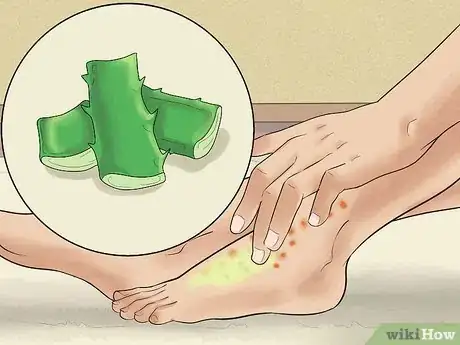
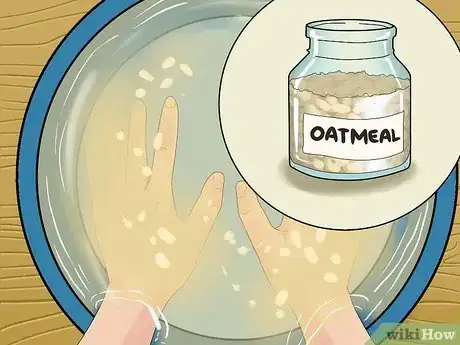
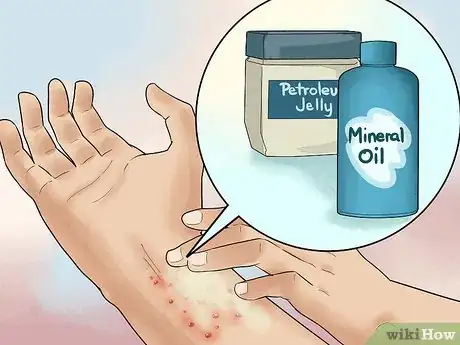

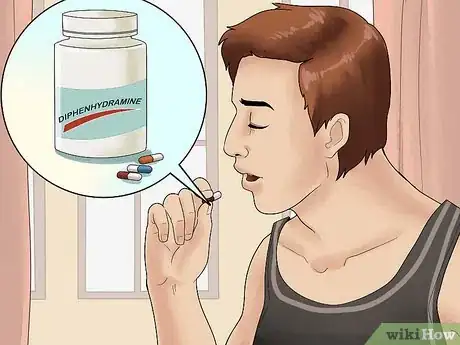
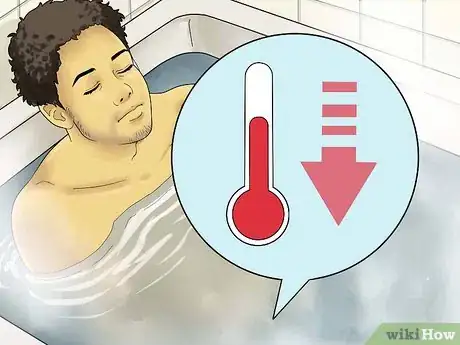

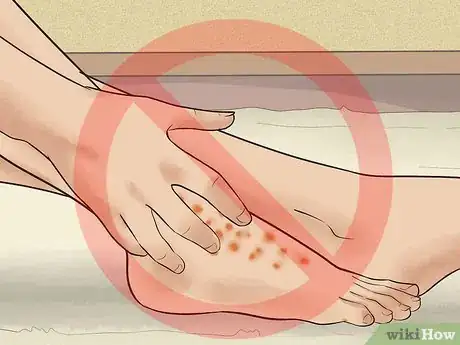
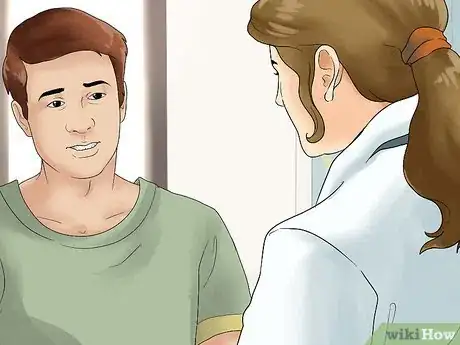
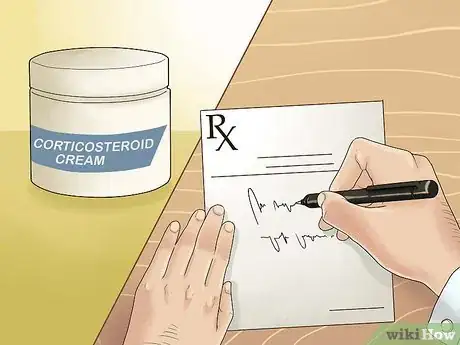


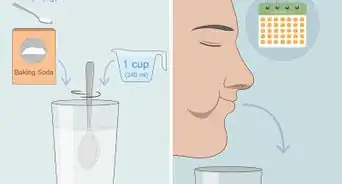
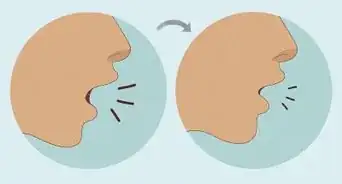
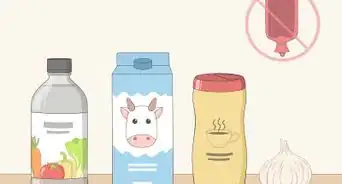

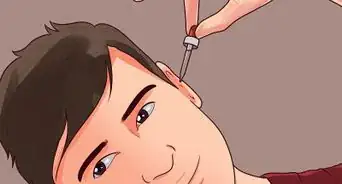



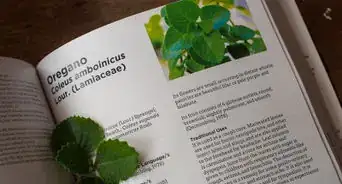
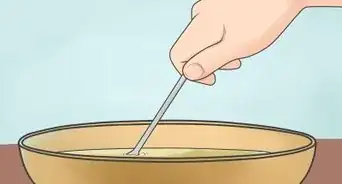
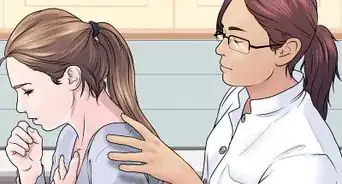
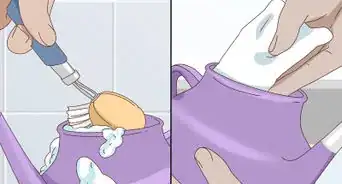












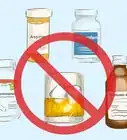



































Medical Disclaimer
The content of this article is not intended to be a substitute for professional medical advice, examination, diagnosis, or treatment. You should always contact your doctor or other qualified healthcare professional before starting, changing, or stopping any kind of health treatment.
Read More...